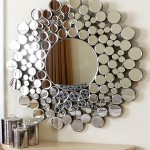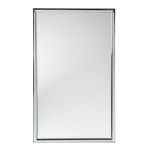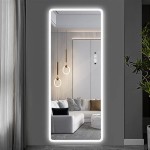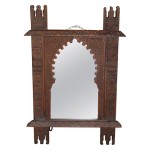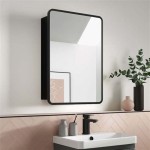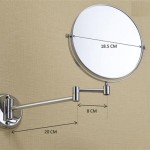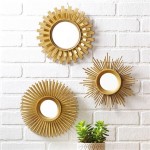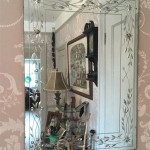Should Vanity Lights Be the Same Size as the Mirror?
Choosing the right vanity lighting can significantly impact the functionality and aesthetics of a bathroom. One common question revolves around the relationship between the size of the vanity mirror and the size of the light fixture above it. While there's no single hard-and-fast rule, understanding the factors at play can help make an informed decision.
Key Considerations for Vanity Light Sizing
Several factors influence the ideal size of a vanity light fixture relative to the mirror:
- Mirror Dimensions: The width of the mirror provides the primary guideline for fixture sizing.
- Bathroom Size: A large bathroom can accommodate a larger fixture, while a smaller bathroom benefits from more proportional scaling.
- Number of Lights: Multiple light sources can distribute light more evenly, but their combined width should still adhere to the general sizing guidelines.
- Light Fixture Style: The design of the fixture itself can influence its perceived size and impact the overall aesthetic.
- Ceiling Height: Higher ceilings allow for larger or longer fixtures, while lower ceilings necessitate more compact options.
The General Rule of Thumb for Sizing
A widely accepted guideline suggests the vanity light fixture should be approximately 75-80% of the mirror's width. This proportion creates a balanced and visually appealing look, ensuring the light effectively illuminates the face without being overpowering.
Why the "Same Size" Approach Isn't Always Ideal
While matching the light fixture's width precisely to the mirror's width might seem logical, it can often lead to several undesirable outcomes:
- Overpowering Appearance: A fixture the same size as the mirror can appear bulky and dominate the space, detracting from the overall aesthetic.
- Uneven Light Distribution: A large, single fixture might not provide sufficient light coverage across the entire mirror surface, creating shadows and hindering functionality.
- Visual Clutter: A fixture that matches the mirror's size can make the vanity area feel crowded and less spacious.
Benefits of a Slightly Smaller Fixture
Opting for a slightly smaller fixture, following the 75-80% guideline, offers distinct advantages:
- Balanced Aesthetic: A smaller fixture allows the mirror and surrounding elements to breathe visually, creating a more harmonious and aesthetically pleasing look.
- Enhanced Functionality: A proportionally sized fixture can effectively illuminate the face and surrounding area without creating harsh shadows or glare.
- Flexibility in Fixture Design: A smaller overall size opens up possibilities for more intricate or decorative fixture designs without overwhelming the space.
Dealing with Multiple Light Sources
When using multiple light fixtures above a single mirror, the combined width of the fixtures should adhere to the 75-80% guideline. This ensures balanced lighting and avoids a cluttered appearance. Proper spacing between individual fixtures is crucial for even light distribution.
Considering the Bathroom's Size and Style
The overall dimensions of the bathroom and its stylistic elements should also factor into the decision. A larger bathroom can comfortably accommodate a larger fixture, while a smaller bathroom requires more careful consideration of scale. The style of the bathroom décor should also harmonize with the chosen fixture design.
Practical Application of the 75-80% Guideline
To apply the 75-80% guideline, measure the width of your vanity mirror. Multiply that measurement by 0.75 or 0.80 to determine the ideal width for your light fixture. For example, if your mirror is 40 inches wide, a fixture between 30 and 32 inches wide would generally be suitable.
Beyond Width: Considering Height and Projection
While width is the primary focus, consider the fixture's height and projection. Fixtures that extend too far down can interfere with headspace, while those that project too far out can create an awkward visual presence. Ensure the chosen fixture complements the bathroom's dimensions and doesn't obstruct movement or functionality.
Adapting the Guidelines
While these guidelines provide a useful starting point, individual preferences and specific bathroom layouts may necessitate adjustments. Ultimately, the goal is to achieve balanced lighting, a harmonious aesthetic, and optimal functionality. Carefully consider all factors before making a final decision.

Guide To Hanging Bathroom Vanity Lighting And Mirrors Liven Design

Guide To Hanging Bathroom Vanity Lighting And Mirrors Liven Design

How To Size A Bathroom Vanity Bar Light Over Mirror Ehow

How To Choose The Right Size Lighting Fixture Simple Bathroom Decor Niche
How To Choose A Mirror Size For Your Bathroom Vanity Quora

What S The Perfect Size Bathroom Vanity Light Bathtubber

Vanity Light Height The Home Depot

Bathroom Lighting Ideas For Bathrooms Of Every Size

Vanity Light Height The Home Depot

Vanity Light Height The Home Depot
